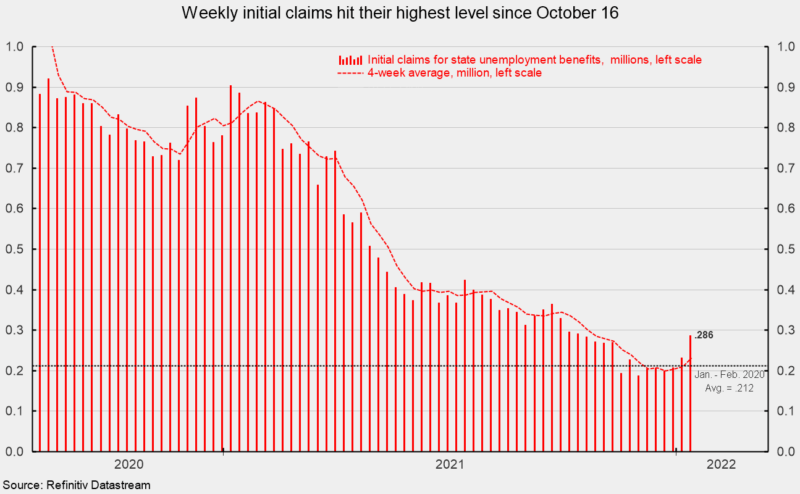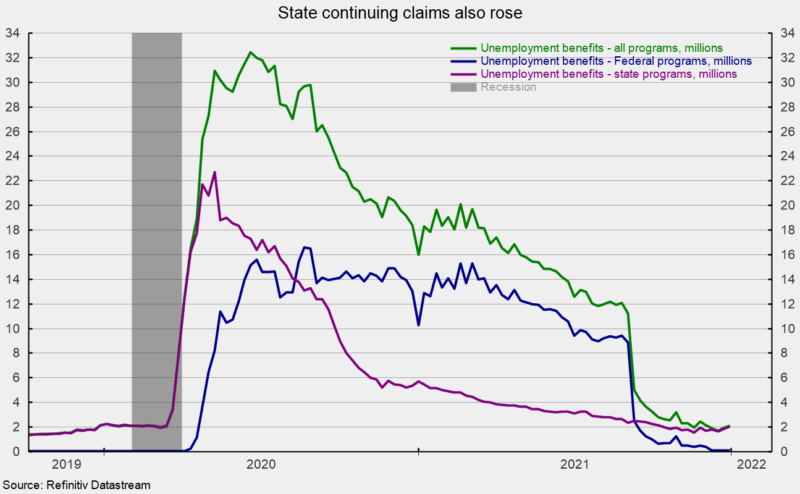Weekly Initial Claims for Unemployment Benefits Rise for a Third Consecutive Week
Initial claims for regular state unemployment insurance increased by 55,000 for the week ending January 15, coming in at 286,000 (see first chart). The latest result is the third increase in a row and seventh in the last ten weeks. Initial claims are now at the highest level since October 16, but by long-term historical comparison, claims remain very low.
The four-week average also rose in the latest week – the third increase in a row and the fourth in the last five weeks – coming in at 231,000, a rise of 20,000. Despite the increases in weekly initial claims, the data suggest the labor market remains very tight.
The number of ongoing claims for state unemployment programs totaled 2.044 million for the week ending January 1, a rise of 179,001 from the prior week (see second chart). State continuing claims had been below 2 million for 11 consecutive weeks.
Continuing claims in all federal programs totaled just 84,308 for the week ending January 1, a rise of 1,113 (see second chart). For January and February 2020, the average for Federal continuing claims was 34,174. Though the current numbers are above the pre-pandemic average, the results are just a fraction of the 16.6 million peak and largely reflect the end of the emergency Pandemic Unemployment Assistance program and the Pandemic Emergency UC program.
The latest results for the combined Federal and state programs put the total number of people claiming benefits in all unemployment programs at 2.129 million for the week ended January 1, a rise of 180,114 from the prior week, the second increase in a row and the first back-to-back increases since August 2021 (see second chart).
Initial claims have risen over the last few weeks but remain at an extremely low level by historical comparison. The current wave of new Covid cases could be a contributing factor to the rise over the last few weeks and could be a threat to the ongoing recovery in production. Still, the low level of claims combined with the high number of open jobs suggest the labor market remains very tight.
Continuing labor shortages, along with materials shortages and logistical issues, are likely to continue to hamper the recovery in production across the economy, though some recent data suggest businesses may be making some progress on reducing constraints on production.







